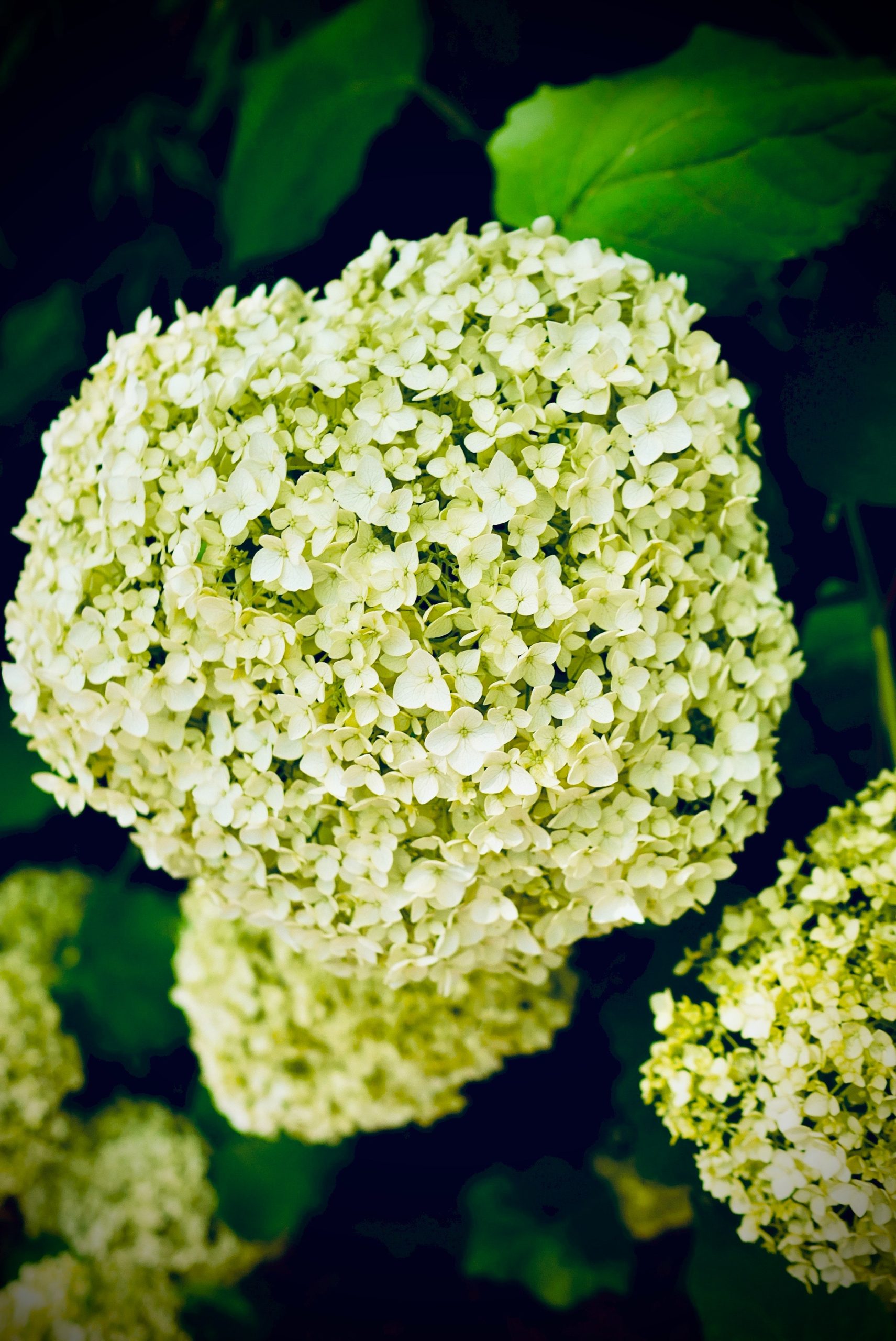A home’s landscaping is an excellent way to show personality and style. Most people like to include a mix of different types of plants, trees, and shrubs in their yards to provide a variety of colors, textures, and heights. Many homeowners also plant flowers that add a pop of color and attract bees and other pollinators.

The climbing hydrangea is one plant that can provide both color and interest. These showy plants are known for their large, beautiful flowers and ability to climb walls and trellises. If you’re thinking about adding these lovely plants to create a perfect garden, here’s what you need to know about how to grow and take care of climbing hydrangeas.
What are climbing hydrangeas?
Climbing hydrangeas are a hydrangea species native to eastern North America. They are part of the Hydrangeaceae family, which includes about 75 species of hydrangeas. While most hydrangeas are shrubs that grow to be about 3-5 feet tall, climbing hydrangeas are vines that can reach up to 30 feet in length.
These plants get their name from their habit of growing up walls, trellises, and other structures. They have thin, wiry stems that are efficient at winding their way around and clinging to surfaces. These stems are covered in small, dark green leaves. In the summer, climbing hydrangeas produce large clusters of white or pink flowers. In the afternoon shade, the flowers often take on a bluish hue.
What are the most common types of climbing hydrangeas?
Hydrangea anomala
The most common type of climbing hydrangea is Hydrangea anomala subsp. petiolaris. This plant has white flowers and can reach 25-30 feet. It’s a popular choice for homeowners because it’s relatively easy to care for and it’s tolerant of a wide range of conditions. They’re not picky about soil type but thrive under partial shade. They are also resistant to sudden frost damage, making them a good choice for people in colder climates.
Miranda hydrangeas
But there are also other hydrangea plants that homeowners can choose from. One example is the Miranda variety which has light pink or cream flowers and variegated yellow and green leaves. These plants are a little more finicky than Hydrangea anomala, and they need to be planted in moist soil that is slightly acidic. They cannot tolerate full sun and need to be in an area with partial shade or dappled sunlight.
Flying saucer hydrangeas
The Flying Saucer variety might be the right choice if you’re looking for a climbing hydrangea with gorgeous blooms. These plants have flowers that can be up to 10 inches wide! The downside is that they’re not as easy to care for as some other varieties, and they need to be in an area with full sun or partial shade.
Silver lining hydrangeas
Beautiful blooms aren’t the only thing a climbing hydrangea offer – some varieties also have stunning foliage. One example is the silver lining hydrangea, a flowering vine that gets its name from the silver-gray hue of its leaves. This plant has small white flowers and can reach up to 50 feet in length. It does not do well under full sun or shade and needs loose, well-drained soil to thrive.
How fast does a climbing hydrangea grow?
Because they are vines with aerial rootlets, climbing hydrangeas are vigorous growers that can grow quite quickly – up to 10 feet in a single season! However, they typically only grow about 3-5 feet each year. This growth rate can vary depending on the variety of plants, the growing conditions, and how well they are cared for.
Climbing hydrangea vines also tend to be short-lived, lasting only about 15-20 years. This is something to keep in mind if you want to grow climbing hydrangea plants near your home or other structures.
What are the benefits of growing climbing hydrangeas?
Many homeowners choose to grow them because of their aesthetic appeal. These plants can add a touch of elegance to any home, and they come in a variety of colors and sizes. Hydrangea blooms are also incredibly long-lasting – they can stay on the vine for weeks or even months! Their flower buds are also very resistant to frost, so they’re an excellent choice for gardeners in colder climates.
But climbing hydrangeas also have some practical benefits. For one, they can provide privacy. The dense foliage of these plants can block out unwanted views, and the vines can grow long. The base of the plant can also become thick and woody, making it difficult for intruders to get through.
Climbing hydrangeas can also help to cool your home. The large leaves of these plants provide shade, and the vines can act as a natural trellis for other plants that offer even more coverage. Growing climbing hydrangeas can help keep your home cool and comfortable if you live in an area with a hot early summer.
And like other plants, they help purify the air. Climbing hydrangeas absorb carbon dioxide and other pollutants, making them a valuable addition to any home. Planting them is one of the best ways you can live green in the city.
How do you plant climbing hydrangeas?
Climbing hydrangea plants are available for purchase at most garden centers and nurseries. They usually come in 2-3 foot tall containers. Depending on the size of the plant, it can take anywhere from 2-10 years for a climbing hydrangea to reach its full potential.
You also want to research the variety of climbing hydrangeas you’re interested in purchasing. As mentioned before, some types are more demanding than others and need specific conditions to thrive. Make sure you know what the plant you’re buying needs before purchasing. This will help ensure that you’re providing the best possible conditions for your climbing hydrangea.
Additionally, the timing of when you plant your climbing hydrangea is essential. These plants are best planted in the spring, after the last frost. This will give them the entire growing season to establish themselves before winter. But you can plant them until the late spring to early summer, as long as you provide them with extra care and attention.
Where is the best place to plant a climbing hydrangea?
When planting a climbing hydrangea, you want to choose the right location. These outdoor plants need at least 6 hours of sunlight per day, so you’ll want to find an area in your yard with some sunlight. The flowering vines also do best in moist, well-drained soil. Avoid planting climbing hydrangeas in areas prone to flooding or where the water drains slowly.
You should also consider the location you choose if you want to use them for privacy. If this is the case, you’ll want to plant the vine near a fence or other structure it can climb. You should also consider the climbing hydrangea’s size when choosing a location. Some varieties can grow up to 50 feet, so make sure you have enough space for the plant to reach its full potential.
How to best grow and take care of climbing hydrangeas?
If you want your climbing hydrangea to thrive, there are a few things you need to do. First, you need to provide the plant with the right growing conditions. The roots of these plants need constant moisture, so you’ll need to water them regularly to keep the soil moist, especially during the hot summer months.
It would be best if you also fertilized your climbing hydrangea every year to give it the nutrients it needs to grow. Use a balanced fertilizer that’s high in phosphorus, such as 10-10-10. You can use a slow-release fertilizer, which will give the plant nutrients over a longer period. This is especially helpful if you’re forgetful about fertilizing or don’t want to fertilize as often.
Pruning is also important for climbing hydrangeas. You should prune climbing hydrangea vines in the late winter or early spring before new growth begins. This will help encourage the plant to produce more flowers. You should also prune any dead or damaged vines.
Do I need a trellis for climbing hydrangea?
A trellis isn’t necessary for climbing hydrangeas, but it can help the plant grow more evenly and prevent it from getting too leggy. If you choose to use a trellis, make sure it’s made of a material that won’t rust, such as aluminum or plastic. You should also attach the trellis to the ground, so it doesn’t blow over in strong winds.
Are there disadvantages to growing climbing hydrangeas?
One of the biggest disadvantages of climbing hydrangeas is that they’re susceptible to various pests and diseases. These include aphids, scale insects, powdery mildew, and leaf spot. You’ll need to be vigilant about checking your plant for signs of these problems and treating them immediately if you see anything.
Additionally, these plants can be challenging to control. Damaged branches can be hard to remove, and the plant can quickly become overgrown. The climbing hydrangea can quickly take over your yard if you’re not careful. The plant’s root zone is also very aggressive and can damage sidewalks, patios, and foundations if it’s not kept in check.
So, while they are beautiful plants, they’re not for everyone. If you’re willing to put in the time and effort to care for them, they can make a beautiful addition to your landscape.
Climbing hydrangeas are a beautiful addition to any garden. Their cascading flowers and lush foliage can add privacy and beauty to your yard. But before you plant a climbing hydrangea, you must research to ensure you can provide the plant with everything it needs to thrive. With the right care, your climbing hydrangea will be a stunning addition to your landscape for many years to come.




